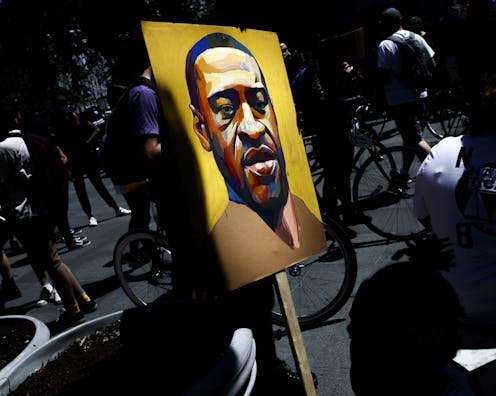George Floyd deserved a better life. A new book charts his trajectory from poverty to the US prison-industrial complex – and the impact of his death
- Written by Clare Corbould, Associate Professor, Contemporary Histories Research Group, Deakin University

George Perry Floyd, Jr. was murdered when Minneapolis police officer Derek Chauvin sank his knee into Floyd’s neck for nine minutes and 29 seconds. Video footage went viral within hours, helping to inspire protests against racism and police violence that lasted all the American summer of 2020.
But while the size of the protests was unprecedented, the activism of that summer had deep roots[1]. Journalists across the United States and indeed the world, focused attention on that history of protest, as they had done during the 2014 police killings of Eric Garner, choked to death in New York, and Michael Brown, shot in Ferguson, Missouri.
Review: His Name Is George Floyd: One Man’s Life and the Struggle for Racial Justice – Robert Samuels and Toluse Olorunnipa (Penguin RandomHouse)
At the Washington Post, reporters and researchers devoted significant resources to a six-part series, George Floyd’s America[2]. Now, two of those journalists, Robert Samuels and Toluse Olorunnipa, have expanded the work into a book: His Name Is George Floyd: One Man’s Life and the Struggle for Racial Justice[3].
When Floyd was born in 1973, 200,000 people were incarcerated in the US. By the time of his death, as Samuels and Olorunnipa point out, that number exceeded 2 million. The proportionate rate of growth of that number in Texas[4], where Floyd grew up, is even worse. African Americans are locked up at 4.75 times the rate of white Americans; Latinos at 1.3 times the rate[5].

















